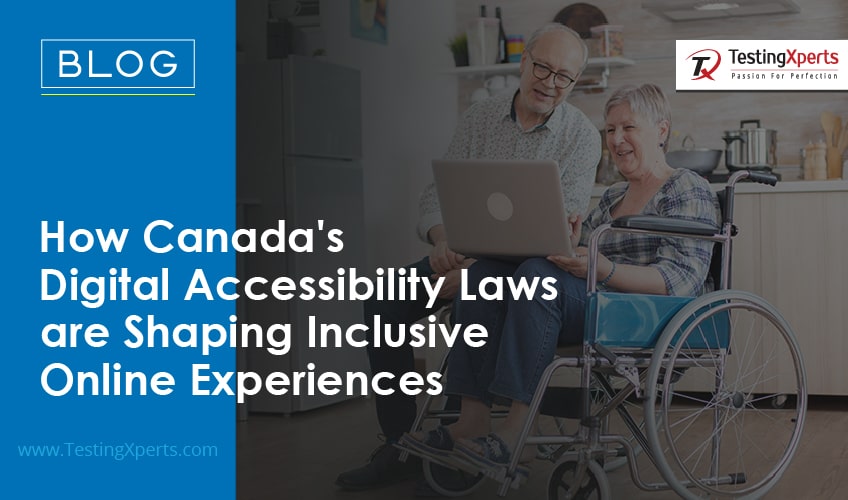Content
1. Why Digital Accessibility Matters?
2. Overview of Digital Accessibility Laws in Canada
3. Understanding the Accessibility for Ontarians with Disabilities Act (AODA)
4. The Canadian Human Rights Act and Digital Accessibility
4. Web Content Accessibility Guidelines (WCAG) and Compliance in Canada
4. The Role of Government Agencies and Organizations in Enforcing Digital Accessibility Laws
5. Conclusion
6. How is TestingXperts Helping Achieve Digital Accessibility in Canada?
In today’s increasingly digital world, accessibility to online content and services is no longer a luxury, but a necessity. For individuals with disabilities, equal access to digital platforms is essential for full participation in society. Recognizing this, Canada has taken significant steps to ensure inclusive online experiences through the implementation of digital accessibility laws. These laws aim to break barriers and provide equal opportunities for individuals with disabilities to access and engage with digital content, services, and technologies. In this article, we will explore the impact of digital accessibility laws in Canada, examining their significance, key provisions, and the transformative effects they have on shaping a more inclusive digital landscape for all Canadians.
Why Digital Accessibility Matters?
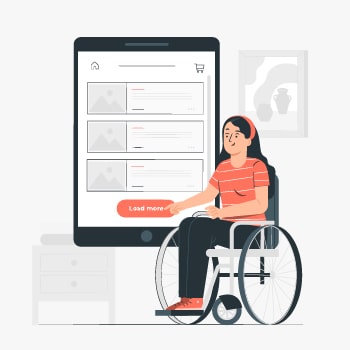
Digital accessibility matters because it is a fundamental aspect of creating an inclusive and equitable society. In an increasingly digital world, access to information, services, and opportunities online is essential for individuals to fully participate in various aspects of life. Digital accessibility ensures that people with disabilities, including those with visual, hearing, mobility, or cognitive impairments, can navigate and engage with digital content and technologies. It enables them to access educational resources, seek employment opportunities, connect with others, and utilize online services independently. By removing barriers and providing equal access, digital accessibility promotes inclusivity, empowers individuals, and fosters a society where everyone can contribute and thrive regardless of their abilities.
Overview of Digital Accessibility Laws in Canada
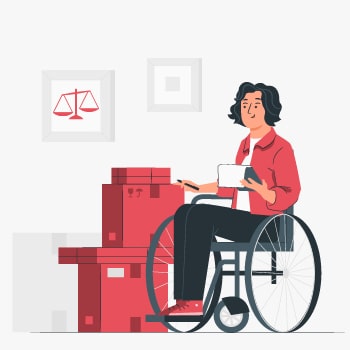
In Canada, digital accessibility laws have been established to ensure that individuals with disabilities have equal access to digital platforms and content. One key piece of legislation is the Accessibility for Ontarians with Disabilities Act (AODA), which sets standards for accessibility in Ontario. AODA requires organizations to comply with the Web Content Accessibility Guidelines (WCAG) 2.0 Level AA for their websites and digital content. Additionally, the Canadian Human Rights Act prohibits discrimination based on disability and applies to digital accessibility. It mandates that organizations provide reasonable accommodations and accessibility measures to ensure equal access for individuals with disabilities. The Canadian Radio-television and Telecommunications Commission (CRTC) also plays a role in enforcing accessibility regulations for broadcasting and telecommunications services. These digital accessibility laws in Canada aim to create an inclusive society by removing barriers and fostering equal access to digital information, services, and opportunities for all individuals.
The Accessibility for Ontarians with Disabilities Act (AODA) is a key piece of legislation in Ontario, Canada, aimed at promoting accessibility and equal opportunities for individuals with disabilities. Enacted in 2005, the AODA sets out a comprehensive framework to remove barriers and improve accessibility in various sectors of society.
Understanding the Accessibility for Ontarians with Disabilities Act (AODA)
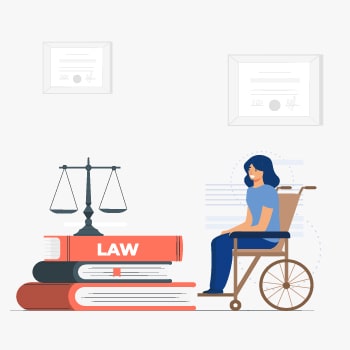
The primary goal of the AODA is to make Ontario fully accessible by 2025. It sets out specific accessibility standards and requirements that organizations must meet in order to comply with the law. These standards address a wide range of areas, including customer service, employment, information and communication, transportation, and the design of public spaces.
Under the AODA, organizations are required to develop and implement accessibility policies and plans. They must also provide accessible customer service and make their websites and digital content accessible in accordance with the Web Content Accessibility Guidelines (WCAG) 2.0 Level AA. Furthermore, organizations with 50 or more employees are obligated to create multi-year accessibility plans and file accessibility reports with the government.
To ensure compliance with the AODA, the Act establishes enforcement mechanisms. Organizations that fail to meet accessibility requirements may face penalties, fines, or other consequences. The AODA also empowers the Accessibility Directorate of Ontario to provide guidance, support, and resources to help organizations meet their accessibility obligations.
The AODA represents a significant step towards creating a more inclusive and accessible society in Ontario. By setting standards and promoting accessibility in various domains, the Act aims to remove barriers and ensure that individuals with disabilities have equal access to goods, services, information, and opportunities. It not only benefits individuals with disabilities but also fosters a more inclusive and diverse society that values accessibility and inclusion for all.
The Canadian Human Rights Act and Digital Accessibility

The Canadian Human Rights Act plays a significant role in ensuring digital accessibility and protecting the rights of individuals with disabilities in Canada. The Act prohibits discrimination based on various grounds, including disability, in federally regulated sectors and organizations. In the context of digital accessibility, the Canadian Human Rights Act applies to online content, services, and platforms offered by federally regulated entities, such as federal government departments, agencies, and federally chartered banks.
Under the Act, organizations have a legal obligation to provide reasonable accommodations to individuals with disabilities to ensure equal access to their goods, services, and facilities. This includes digital accessibility, where organizations are required to take steps to make their websites, digital content, and online services accessible to individuals with disabilities.
The Canadian Human Rights Act recognizes that individuals with disabilities should not face barriers or be disadvantaged in their access to information, communication, and services due to their disabilities. It promotes the principle of equal treatment and equal access for all individuals, regardless of their abilities.
In the context of digital accessibility, the Canadian Human Rights Act aligns with other accessibility laws and standards, such as the Web Content Accessibility Guidelines (WCAG). It reinforces the importance of organizations implementing accessibility measures to ensure that their digital platforms are inclusive and accessible to individuals with disabilities.
In cases where individuals believe they have experienced discrimination based on disability, including digital accessibility barriers, they can file a complaint with the Canadian Human Rights Commission. The Commission has the authority to investigate complaints, mediate resolutions, and, if necessary, refer cases to the Canadian Human Rights Tribunal for adjudication.
As a whole, the Canadian Human Rights Act serves as a crucial legal framework for promoting digital accessibility, ensuring equal access and non-discrimination for individuals with disabilities in federally regulated sectors across Canada. It emphasizes the importance of accessibility and reinforces the rights of individuals with disabilities to fully participate in society, including in the digital realm.
Web Content Accessibility Guidelines (WCAG) and Compliance in Canada
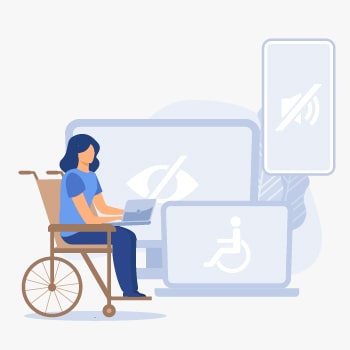
Web Content Accessibility Guidelines (WCAG) are a globally recognized set of guidelines developed by the World Wide Web Consortium (W3C) to ensure digital content is accessible to individuals with disabilities. WCAG provides a framework for creating inclusive websites, web applications, and digital content that can be accessed and used by people with various disabilities.
In Canada, WCAG has been widely adopted as a standard for digital accessibility. It is referenced in various accessibility laws and policies, including the Accessibility for Ontarians with Disabilities Act (AODA) and the Canadian Human Rights Act. WCAG 2.0 Level AA is the most commonly referenced standard in Canadian legislation, though organizations are encouraged to strive for the higher-Level AAA for enhanced accessibility.
To achieve compliance with WCAG, organizations are required to implement specific design and development practices that address various accessibility principles, such as perceivability, operability, understandability, and robustness. These principles cover areas such as alternative text for images, clear navigation structures, sufficient color contrast, keyboard accessibility, and compatibility with assistive technologies.
Organizations are responsible for ensuring that their websites, web applications, and digital content conform to the WCAG guidelines. This includes adopting accessible design and coding practices, conducting accessibility audits and testing, and making necessary adjustments to address any identified accessibility barriers.
Compliance with WCAG is not only a legal requirement in Canada but also an essential aspect of creating an inclusive digital environment. By adhering to WCAG guidelines, organizations can provide equal access and usability to individuals with disabilities, regardless of their impairments. Compliance with WCAG fosters inclusivity, improves user experience for all users, and demonstrates a commitment to accessibility and social responsibility.
It is important to note that digital accessibility is an ongoing process, and organizations should regularly assess and update their digital properties to maintain compliance with the latest versions of WCAG and evolving accessibility standards. By staying up to date with WCAG requirements and continuously improving accessibility practices, organizations can ensure that their digital content remains accessible and inclusive for all users in Canada.
The Role of Government Agencies and Organizations in Enforcing Digital Accessibility Laws

Government agencies and organizations play a crucial role in enforcing digital accessibility laws and ensuring compliance with accessibility standards. Their involvement helps promote and enforce equal access for individuals with disabilities in the digital realm. Here are some key aspects of their role:
Establishing and Monitoring Compliance:
Government agencies, such as accessibility directorates, human rights commissions, and regulatory bodies, are responsible for establishing and overseeing digital accessibility regulations. They develop guidelines and standards, such as the Web Content Accessibility Guidelines (WCAG), and ensure organizations understand their obligations. These agencies monitor compliance through audits, inspections, and investigations to ensure adherence to accessibility laws.
Providing Guidance and Resources:
Government agencies provide guidance and resources to support organizations in achieving and maintaining digital accessibility compliance. They offer information on best practices, training materials, checklists, and technical assistance to help organizations understand and implement accessibility requirements. These resources empower organizations to improve their accessibility practices and remove barriers effectively.
Complaint Resolution and Remediation:
Government agencies handle complaints related to digital accessibility violations. Individuals who experience discrimination or barriers can file complaints, which are investigated by the respective agencies. If violations are found, the agencies work with organizations to remediate accessibility issues and ensure future compliance. They may offer mediation services or, in some cases, refer cases to tribunals or courts for resolution.
Collaboration and Partnerships:
Government agencies collaborate with organizations, disability advocacy groups, and industry stakeholders to promote accessibility and foster a culture of inclusion. They engage in public consultations, workshops, and forums to gather feedback, share knowledge, and drive improvements in digital accessibility. Collaboration ensures that the needs and perspectives of individuals with disabilities are considered in the development and enforcement of accessibility laws.
Awareness and Education:
Government agencies raise awareness about digital accessibility and educate organizations and the public on their rights and responsibilities. They conduct awareness campaigns, publish reports, and provide accessibility-related information through websites and publications. By disseminating knowledge about accessibility, these agencies empower individuals, organizations, and communities to actively participate in creating accessible digital environments.
Through these efforts, government agencies and organizations serve as catalysts for change, driving compliance with digital accessibility laws and fostering a more inclusive society. By providing guidance, monitoring compliance, resolving complaints, and promoting awareness, they ensure that individuals with disabilities have equal access to digital information, services, and opportunities.
Conclusion
The journey towards inclusive online experiences in Canada has been marked by significant efforts to ensure equal access for individuals with disabilities. Digital accessibility laws, such as the Accessibility for Ontarians with Disabilities Act (AODA) and the Canadian Human Rights Act, have played a pivotal role in shaping a more inclusive digital landscape.
The journey towards inclusive online experiences is ongoing. As technology evolves, new challenges and opportunities arise. Advancements in assistive technologies, the emergence of new digital platforms, and evolving user needs require continuous efforts to ensure accessibility. Collaboration among government agencies, organizations, individuals with disabilities, and technology providers is crucial in shaping the future of digital accessibility.
As we look ahead, it is imperative that organizations prioritize digital accessibility and invest in inclusive design and development practices. By embracing accessibility as a core value, we can create a digital landscape that fosters equal access, empowers individuals, and celebrates diversity. Together, let us continue this journey towards inclusive online experiences in Canada, where digital barriers are shattered, and everyone can fully participate in the digital age.
How is TestingXperts Helping Achieve Digital Accessibility in Canada?

TestingXperts joins in as your trusted partner. We specialize in offering a wide range of accessibility testing services tailored to Canadian businesses’ unique requirements. Our team of experts possesses deep knowledge and expertise in industry best practices, accessibility guidelines (such as WCAG 2.1), and assistive technologies.
By partnering with TestingXperts, organizations in Canada can leverage our comprehensive suite of accessibility testing services. We conduct thorough evaluations to identify potential accessibility barriers and provide actionable recommendations to enhance digital inclusivity.
The post How Canada’s Digital Accessibility Laws are Shaping Inclusive Online Experiences first appeared on TestingXperts.

